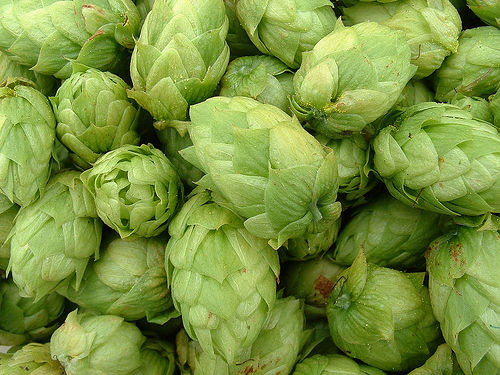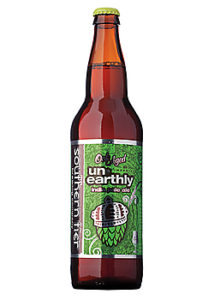Kevin Brooks is a cheesemonger and self-proclaimed beer geek. This Saturday he’ll be leading a seminar at the Craft Beer Festival in NYC. It is a must-see event and tickets tend to go very quickly. The event organizers look into things like plastic safety barriers and other health and safety measures, to support a large number of people who will be attending the festival. There will be a variety of different beers, and if you are tempted to try any of the beers in this post they are all available at Murray’s on Bleecker Street.
IPAs are intimidating.
It’s true. Big, strong and intensely bitter, IPA beers let hops shine. Stinking of citrus and pine, they explode on the palate and, if you’re not used to it, they can really scare you off. I remember once in my callow youth when I left most of a pint of Sierra Nevada sitting on the bar, possibly thinking, “that was gross, it probably went bad.” Oh foolish past me!
The granddaddy of IPAs was developed in Burton on Trent in the 1800s. At the time, the British were having difficulties delivering beer to colonies in India. A long hot sea voyage wasn’t good for the beer, and it was arriving spoiled and useless. Knowing of hops’ preservative qualities and that a stronger beer would be better suited to the trip, brew masters upped the amount of hops they added to the beer, resulting in a strongly bitter brew. It was pale ale destined for India, so they called it India Pale Ale, or an IPA. The name stuck.
There is a massive range of flavors and aromas in the world of hops, and brewers continue to find new ways to unlock ever more bitter and intense brews. Dry-hopping, wet-hopping, hop backs, double hopping, continuous hopping, bar-side hop infusers, all working to wrest more flavor and aroma out of this humble flower. Some hops are added for bitterness, some for flavor, some for aroma, and different kinds of hops are added at different parts of the boil. It’s all very involved.
To ease into the world of hops, I’ve selected three beers that raise us up through levels of intensity. So starting off we have an English IPA, Coniston Brewery’s Bluebird Bitter. English IPAs are milder than their American cousins; they’re hopped less, and English hops are milder, more floral, and less assertive than American hops. They also have cute names like Fuggle. Bluebird stands as a very drinkable, well balanced ale with a sweet backbone, lovely floral aromas, and light bitterness. I like this one paired with a mellow English cheddar with a similarly silly name, Tickler Cheddar!
Next up was an emblematic American IPA, Green Flash’s West Coast IPA. American hops tend to be more towards the piney and citric side of things, and American brewers tend to throw a whole lot more of them into the kettle, making for much bigger, more hop forward beers. The West Coast IPA smells like fresh cut grapefruits in the middle of a pine forest, while the flavor is big and citrusy, but still balanced, with a lingering bitterness to let you know what you are drinking. It’s also a touch stronger, at 7.2% abv, so be warned. For cheese picks, this is amazing with the hops-coated Cavemaster Reserve Hudson Flower.
And now for the bitterest of the bitter, an Imperial IPA. Imperial is a bit of a buzzword in brewing these days, and generally just means “more”, as in “more hops, more booze, more flavor.” Southern Tier’s Unearthly Imperial IPA is no joke, and one of my favorites. Enormously bitter, but with a big malt backbone supporting it, making for an eye-watering, yet still drinkable beer. But Murray’s doesn’t have the standard Unearthly; we carry the Oak Aged Unearthly, which has spent the better part of a year chilling in an oak barrel.
What a difference a year (trapped in a barrel) makes! As beer ages, hop flavor and aroma is the first thing to fade. First the aromas fade to nothing, then the flavors dwindle, leaving behind just the characteristic bitterness. The Oak Aged Unearthly has mellowed out considerably. No piney, no citrus, just a big chewy bitterness that isn’t overwhelming. And when you take a big, balanced IPA and remove the hop character, you’re left with a big, sweet, malty beer. The level of caramelly sweetness is really surprising, and so is how well it pairs with some Mast Bros. Sea Salt chocolate. Who would have thought you could drink an IPA with dessert?
Are IPAs intimidating? Sure. But as with anything else, if you give it half a chance, you’ll find some real pleasant surprises in there.




